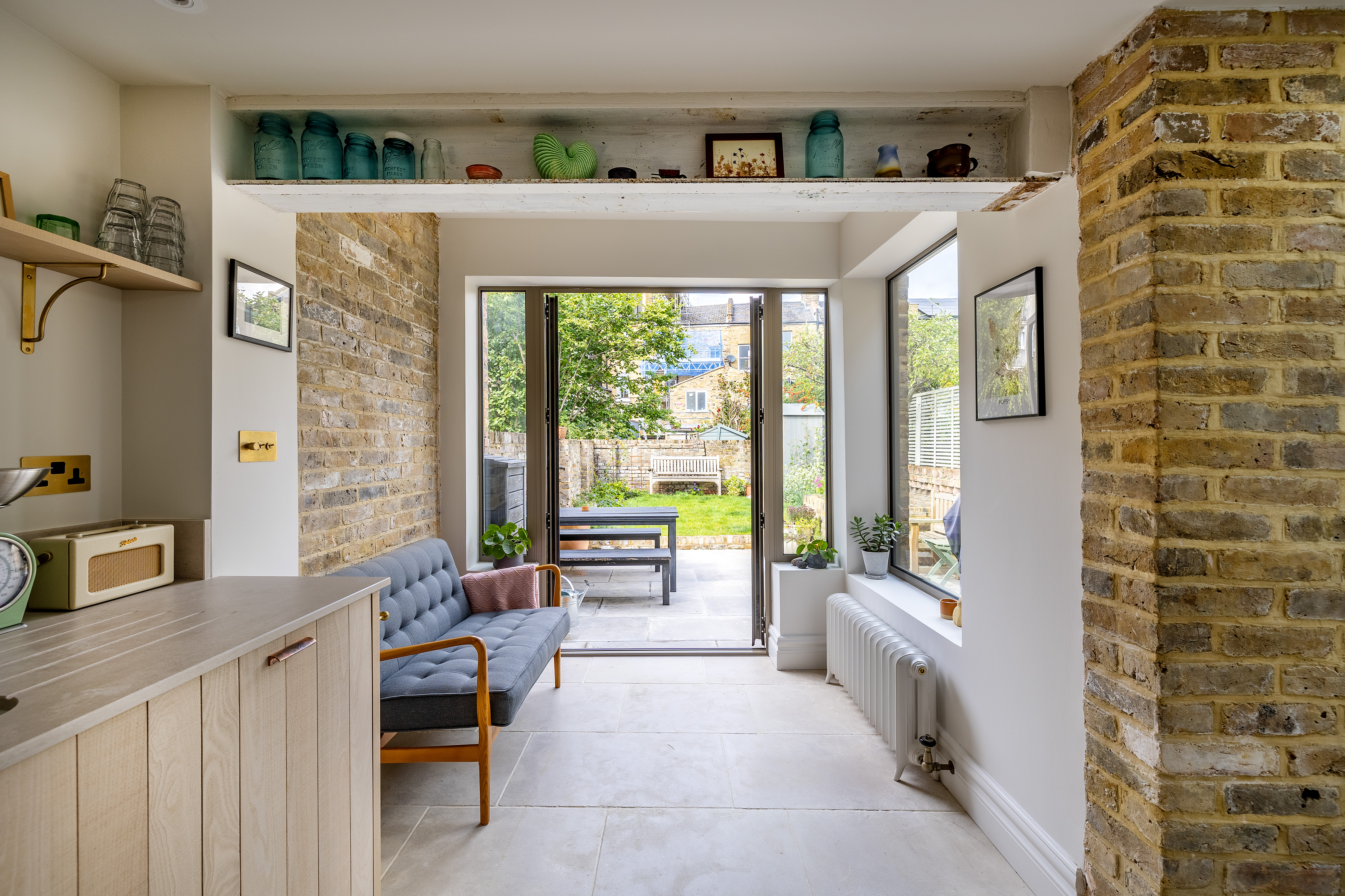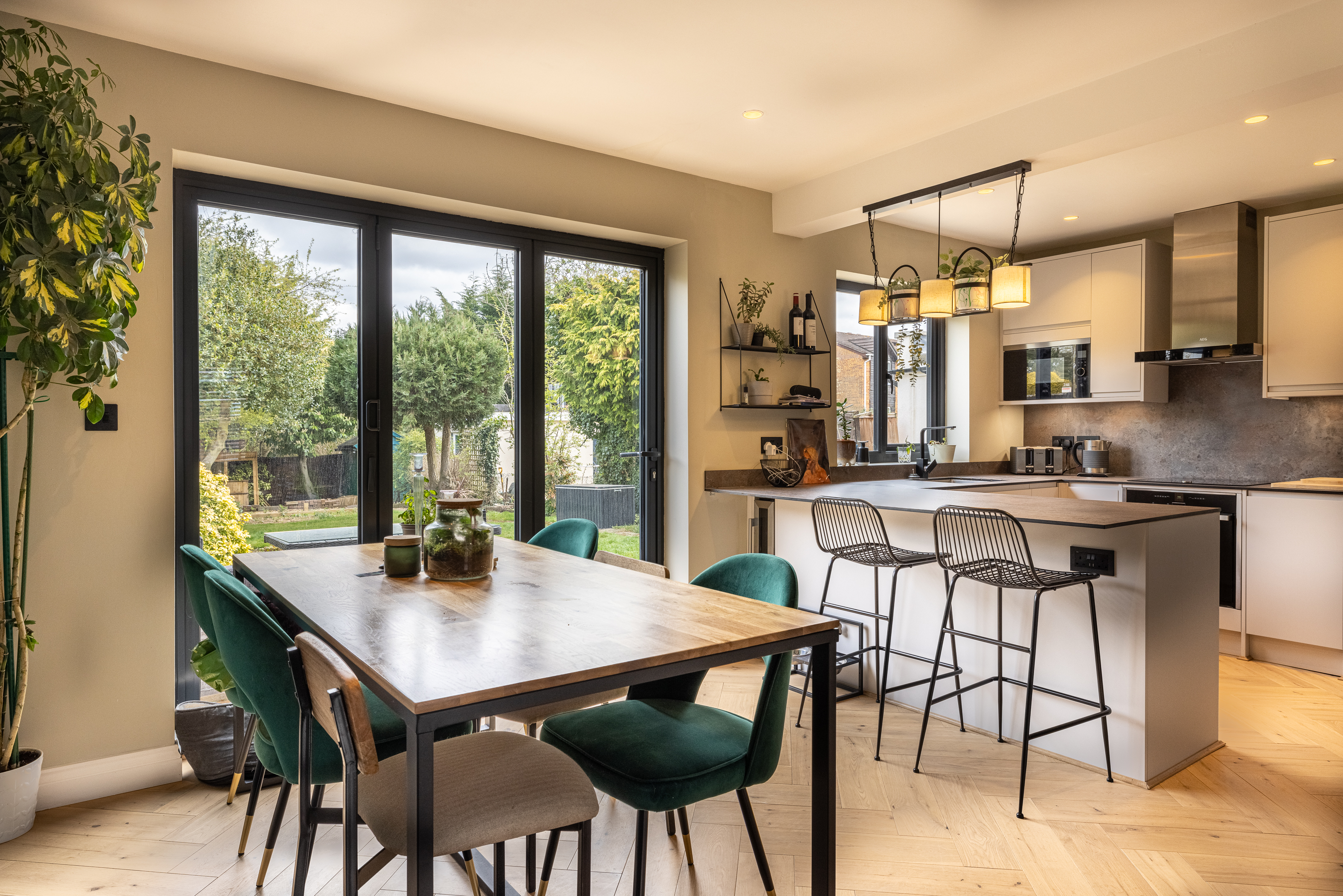Securing Loans for Home Improvements: What You Need to Know
- 01-11-23
- 5 min read
- Blog
Diving into the world of home improvements is no small feat – it demands a well-thought-out financial plan.
Budget well, and you stand to gain both a new and exciting space for your property and also increased value in your property.
Whether it's a full-blown kitchen renovation, loft conversion or adding an entirely new room, each home improvement project has its own financial considerations.
In this article, we’ll walk you through various loan options available for home improvements, providing insights to help you make informed decisions tailored to your needs.
Embarking on home improvement projects enhances the aesthetic appeal and functionality of your space while potentially increasing property value.
Read our guides on the ROI of house extensions to learn more about the value an extension can unlock for your property.
To finance your project, understanding the various loan options available is paramount. Financing your project with loans is different from remortgaging, which is only an option for those who have sufficient equity in their properties.
Above: Remortgaging is a popular method for raising funds for an extension, but it's not the only way.
Either if you can remortgage, it’s not guaranteed to be the best deal. For starters, remortgaging is more complex and comes with a wider range of terms and potential fees and charges.
Remortgaging is also not ideal if you plan to move. By some analyses, remortgaging can cost up to 10 times more than simpler loans – so it’s best to compare your options!
Below, we delve into the details of four common home improvement loan types, helping you discern which might be the most fitting for your project.
Secured home improvement loans are linked to your property, which secures the loan, acting as collateral. You effectively place your home as collateral in reward for better rates and higher borrowing.
How They Work
These loans are secured against your property, meaning your home acts as collateral.
In case of any default in repayment, the lender has the legal right to take possession of your property to recover their losses.
Interest Rates and Borrowing Limits
Secured loans typically offer lower interest rates compared to unsecured options, given the reduced risk for lenders.
The borrowing limits are also generally higher, allowing homeowners to undertake substantial home improvement projects.
Repayment Terms
Repayment terms can be quite flexible, often ranging from five to 25 years, depending on your agreement with the lender and your financial capability.
Application and Approval Process
The application process for a secured loan is more rigorous, requiring a thorough check of your financial history, property value and equity.
Approval may take longer, but the benefits in terms of lower interest rates and higher borrowing limits can be substantial.
Risks and Considerations
The most significant risk lies in the potential loss of your property if you fail to meet the repayment terms.
Therefore, it's crucial to have a solid repayment plan and consider taking out insurance to protect against unforeseen circumstances that might affect your ability to repay the loan.
Unsecured personal loans are what most people know loans to be.
They’re simple, personal loans with rates and borrowing limits that vary widely depending on the situation.
How They Work
These loans do not require any collateral, meaning your property is not at direct risk in case of non-repayment.
However, defaulting can still severely affect your credit score and future borrowing capabilities.
Above: Some extensions can be covered by simple unsecured loans, especially if you have a sum to contribute towards it.
Interest Rates and Borrowing Limits
Given the higher risk to lenders, interest rates on unsecured loans tend to be higher.
Borrowing limits are generally lower, making this option more suitable for smaller home improvement projects.
Repayment Terms
Repayment terms are usually shorter, ranging from one to seven years, necessitating higher monthly payments but resulting in lower total interest paid over the loan’s lifetime.
Application and Approval Process
The approval process is typically quicker, with less paperwork and fewer hurdles to jump through. Your credit score and financial history are significant in the approval process and the loan terms you receive.
Risks and Considerations
While your property isn't used as collateral, defaulting on an unsecured loan can still have severe consequences, including damage to your credit score and potential legal action from the lender.
Credit cards offer a unique option for financing smaller home improvement projects.
With 0% interest offer terms, you can borrow quite a lot of money cheaply using credit cards, it’s essential that your project costs are predictable to ensure you don’t borrow beyond your means.
How They Work
Credit cards provide a revolving line of credit, allowing you to borrow up to a certain limit and repay at your own pace as long as you meet the minimum monthly repayments.
Interest Rates and Borrowing Limits
Interest rates can be high, but many credit cards offer 0% interest on purchases for an introductory period. Borrowing limits vary depending on your credit history and the card provider.
Repayment Terms
You can repay at your own pace, though clearing the balance before the end of any 0% interest period is advisable to avoid high-interest charges.
Application and Approval Process
Approval is usually quick, and you can start using the credit immediately upon receipt of your card.
Risks and Considerations
It’s easy to overspend on a credit card, and high interest rates can quickly add up if you're not careful.
Ensure that you have a plan to repay the balance promptly, especially if you're taking advantage of a 0% interest offer.
When it’s time to give your home a bit of a facelift, finding the right way to fund it is as crucial as picking the perfect shade of paint.
Here’s some tips on selecting the best loan product:
Interest rates are the dominant factor that decide how much your loan will cost over time.
Shop around and compare rates from different lenders. You might consider going through a credit broker or mortgage advisor to help you find the best rates for your particular financial situation and needs.
Loan terms must scale firstly to the project and secondly to your living situation and financial cash flows. If you plan on selling the property after extending, you might just need a short-term loan.
However, if you plan to stay in the property, you may wish to pay the loan back over years.
Consider what the small print says about fees and penalties. Are there early repayment charges? Are rates fixed or variable?
How much do you really need to borrow? And what’s it going to do for the value of your home?
Borrowing too little might leave you stuck halfway through the project, but borrowing too much? Well, that’s just paying interest for the sake of it.
Ensure your project is properly and realistically priced and protected from escalating costs.
Shield yourself against unpredictable costs by taking out the appropriate insurance, e.g. protect you if something goes wrong – such as a legal dispute or material theft.
Diving headfirst into the world of home improvement loans without professional guidance is risky.
This is where a mortgage advisor, credit broker or financial advisor comes in.
With their help, you can explore financing options and come up with a strategy, providing peace of mind that you’re making the right financial moves.
Take your time, weigh up your options, and don’t be shy to seek out expert advice.
Embarking on a home improvement journey is an exhilarating prospect, but you’ve got to plan accordingly. While remortgaging is an option for some, weighing it up against other forms of loans and financing methods is wise.
With the right financial plan in hand, backed by thorough research and professional advice, you can fund your project in a manner that aligns with your own personal situation.
If you’re interested in extending your team, get in touch with Design Team. We can provide professional designs and drawings to get your project underway.
Book a free Design Consultation with one of our team to discuss your project in more detail.

19-02-24 5

19-02-24 5
.jpg)
17-01-24 5